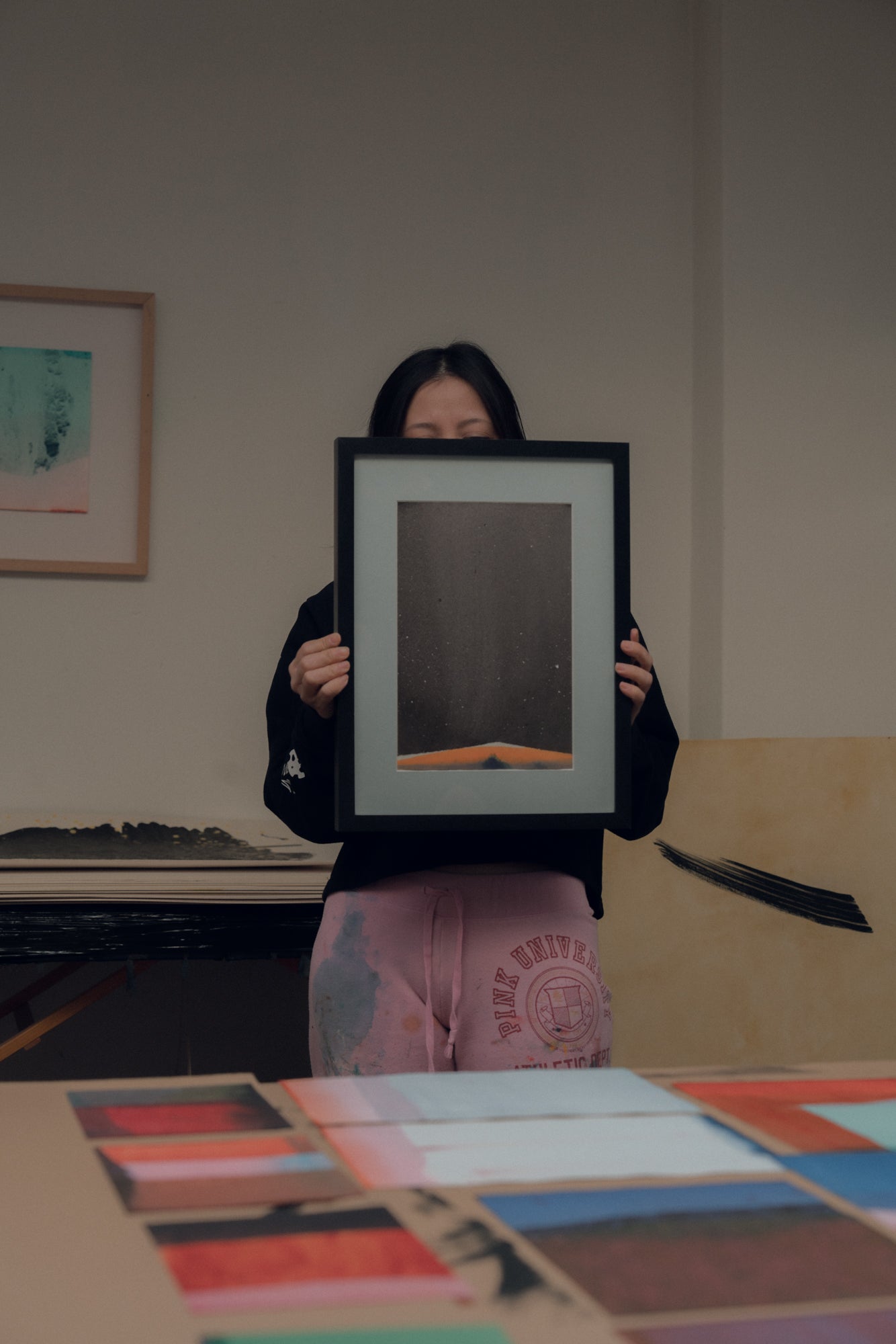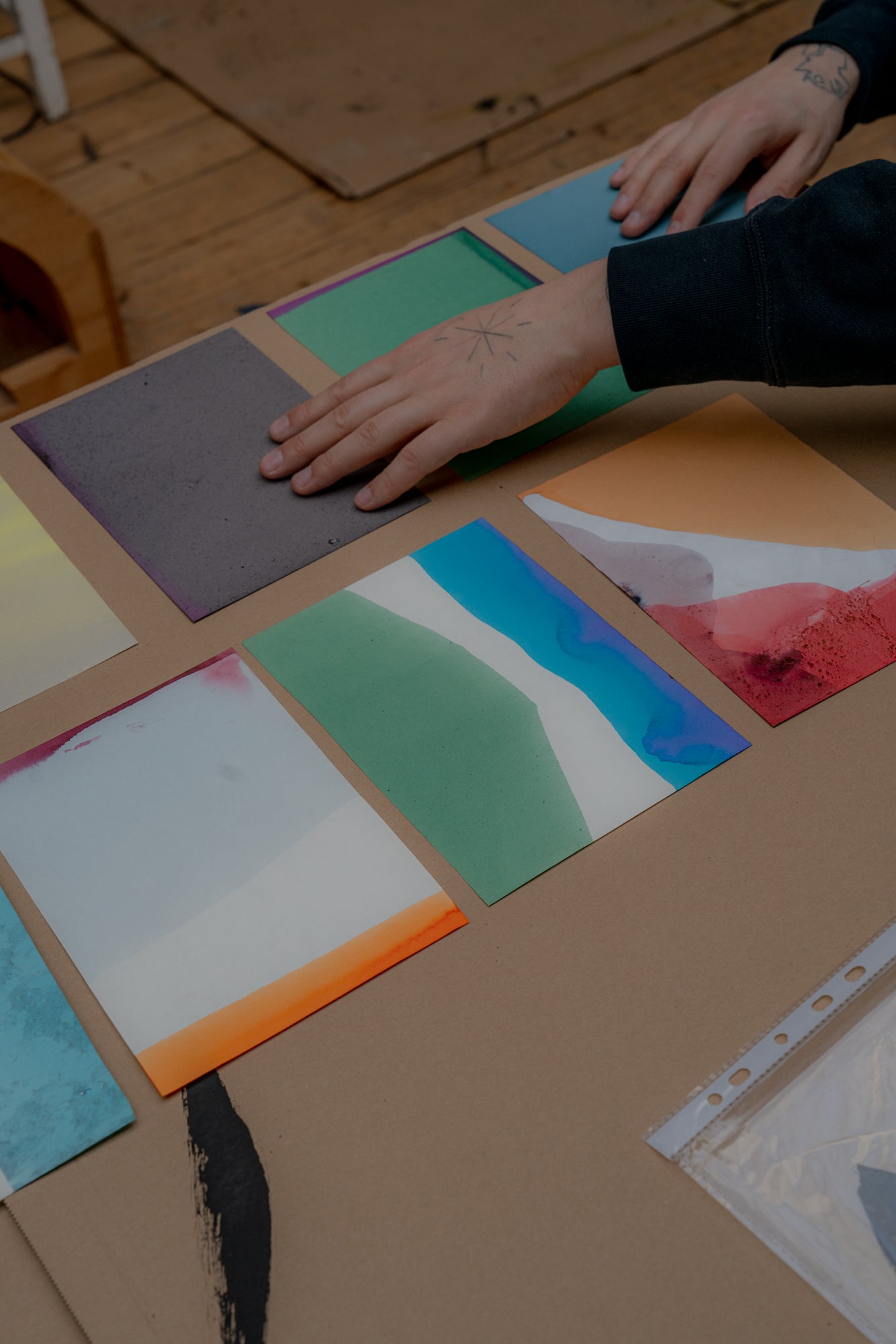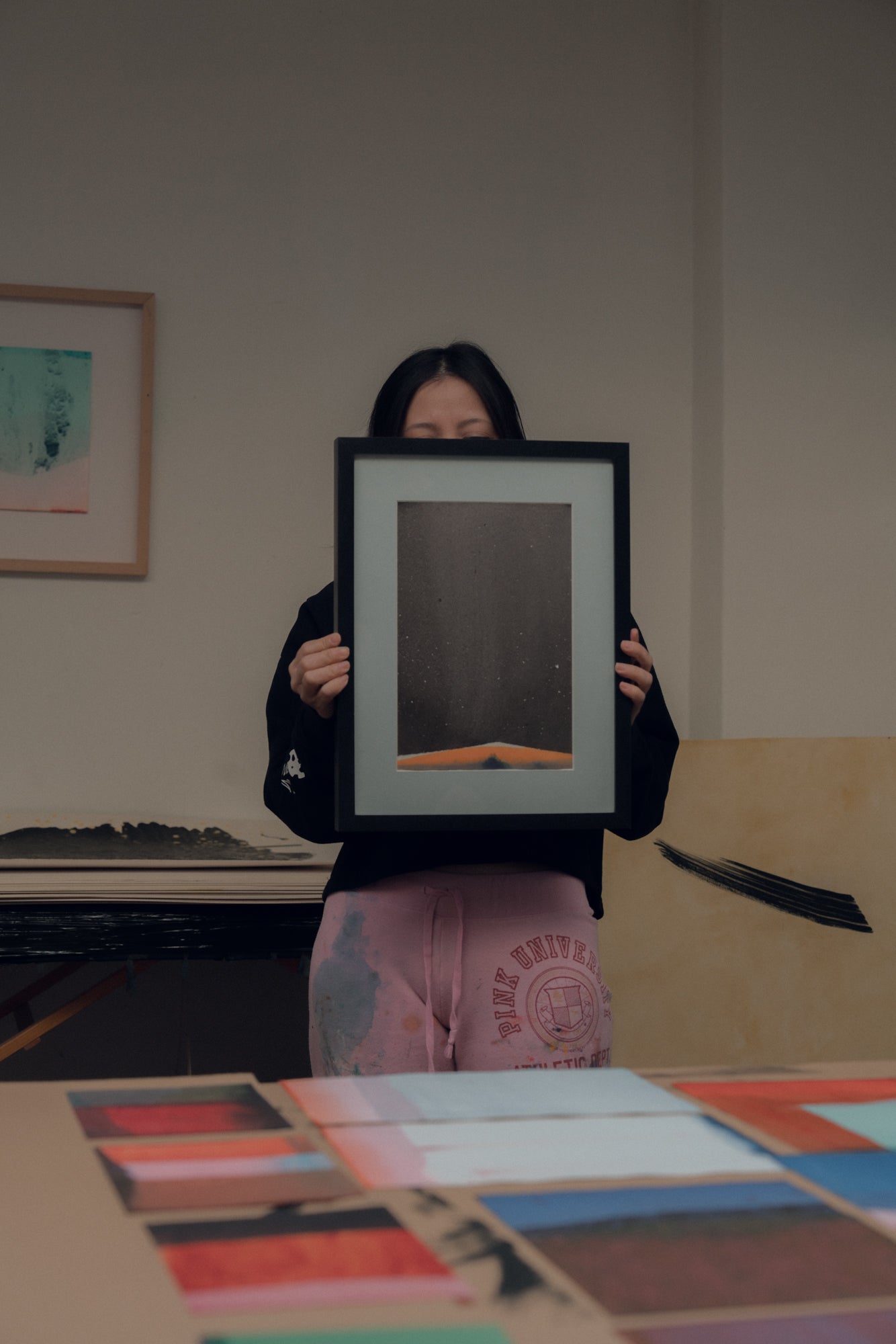
The mirror of my soul
Chang Bui
What does Chang Bui's painting have in common with fabric dyeing art? What role does intuition play in her work? How would she summarize her creativity in three words, and does she want to tell a specific story through brushstrokes? You will discover all of this in a brief interview with Chang.
You create with a truly fascinating technique. How did you develop it?
The technique I utilize for painting is batik. I learned it at the Academy in the artistic fabric studio led by Prof. Dorota Grynczel. Batik is a very ancient fabric dyeing technique historically used mainly in Asia and Africa. It involves using beeswax to create patterns on the fabric. I have always felt the need to be close to nature. Working with organic materials satisfies that need and, consequently, batik has become my preferred technique.
What is important to you in the act of creation?
The process of painting itself is highly significant to me. I don't paint to tell stories, nor do I use art as a medium to convey specific thoughts. Creation, painting, music allow me to expand the invisible realm of my life. I don't exactly know what it is, but I know that through it, I am less unhappy. I simply want to paint, to experience art in the same way one listens to music, completely abstractly, disconnecting from what my mind knows or understands.


Your studio is located in the apartment where you live. Are you able to separate work from your personal life? How do you do it?
The studio is somewhat like a second home. It is not possible to merge work with personal life; they are two different activities. However, painting, despite considering it my work, remains a deeply private element of my life.
-
24 | Chang Bui | Poster
Regular price 295,90 zł PLNRegular priceUnit price / per -
Form 5/08 I Chang Bui
Regular price From 850,00 zł PLNRegular priceUnit price / per -
Form 8/02 I Chang Bui
Regular price From 850,00 zł PLNRegular priceUnit price / per -
Form 8/01 I Chang Bui
Regular price From 850,00 zł PLNRegular priceUnit price / per -
Form 6/05 I Chang Bui
Regular price From 850,00 zł PLNRegular priceUnit price / per -
Form 7/03 I Chang Bui
Regular price From 850,00 zł PLNRegular priceUnit price / per -
Form 1/00 I Chang Bui
Regular price From 850,00 zł PLNRegular priceUnit price / per -
Form 1/07 I Chang Bui
Regular price From 850,00 zł PLNRegular priceUnit price / per -
Form 1/02 I Chang Bui
Regular price From 850,00 zł PLNRegular priceUnit price / per -
Form 1/03 I Chang Bui
Regular price From 850,00 zł PLNRegular priceUnit price / per -
Form 4/02 I Chang Bui
Regular price From 850,00 zł PLNRegular priceUnit price / per
Do you work in silence, or does music support your creative process?
I often listen to music. It serves as inspiration for me, although I also enjoy working in silence. It all depends on my current mood.

How would you describe your artwork in three words?
The mirror of my soul.
In what space or setting do you envision your artwork?
I don't dwell on that during the act of creation. It is an intimate space for me, and I don't necessarily contemplate where my works will hang in 5, 10, or 100 years. Every exhibition, whether in a public or private space, is an honor for me, but I wouldn't say it is the modus operandi of my creativity.

Your studio is located in the apartment where you live. Are you able to separate work from your personal life? How do you do it?
The studio is somewhat like a second home. It is not possible to merge work with personal life; they are two different activities. However, painting, despite considering it my work, remains a deeply private element of my life.











